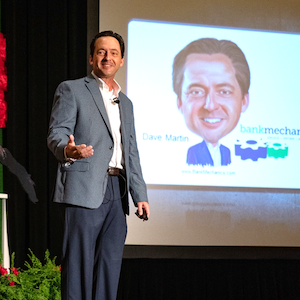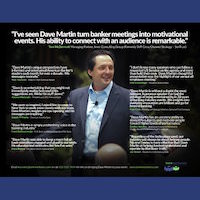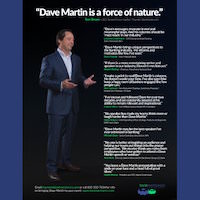 |
 |
Every man is guilty of all the good he didn't do. » Voltaire
Just Putting Around
One of my favorite stories from the past week came out as Tiger Woods was winning his 76th PGA tournament.
This was his fifth win in the last 12 tournaments he’d played in. So, it’s not exactly like he’d been a real hacker lately.
And it appears that maybe, just maybe, the tabloid-filling drama that his life became for a few years is settling down. (Winning always helps.)
The story that interested me was about the impromptu putting lesson he received the day before the tournament began from fellow pro, Steve Stricker.
Stricker is a friend of Woods and is highly regarded among other pros for his short game. (Sorry for sounding a bit Golf Channel-ish.)
What struck me about the story was that Woods wasn’t putting well at all leading up to the tournament. He asked his friend to take a look at what he was doing.
Arguably the best golfer in history, who has literally won over six times as many tournaments as Stricker, was humble enough to ask for coaching from a peer.
For 45 minutes, Stricker worked with Tiger, giving him feedback and suggestions. Woods then proceeded to go out and have the statistically best putting performance of any tournament in his career. And he won by two strokes over… Steve Stricker.
While talking heads on sports shows have debated whether or not it’s appropriate for one competitor to coach another he’s competing against, that’s not what this story had me reflecting upon.
I chuckled, thinking that there is no way that Stricker told Woods anything he hasn’t heard before. Does anyone think for a second that there was a new trick-of-the-trade or technique that Woods had somehow never been exposed to?
Not likely.
It was almost assuredly feedback and information he’s gotten before. But on that day and in that setting, it clicked.
He was able to accept the input and was motivated to put it to use.
Over the years, I’ve regularly gotten a few smiles when people speak of having “gone through training,” like it’s a one-and-done thing. We humans sometimes need to hear the same (or very similar) messages multiple times and/or in just the right settings for them to “suddenly” dawn on us.
Margaret Thatcher once said, “You may have to fight a battle more than once to win it.” The same is true for getting through to certain associates.
Keep coaching.
The Core of the Matter
The title of a recent column by Geoff Colvin in Fortune magazine caught my eye. It read, “Your Business Model Doesn’t Work Anymore.”
Colvin makes several familiar points that remain timely and relevant all the same. The principal suggestion of his column is a good one.
He posits that the new “must have” core competency of business is not necessarily whatever a business is currently doing well. For long term survival, business-model innovation is the new key competency.
No one company is bigger than its industry. And as technology continues to change the products and services that customers desire, and/or changes the ways in which those products are delivered, companies must continue to change as well.
Colvin lists many industries in need of new models. And, yes, banking makes his list. (Shocking, I know.)
But as I’ve told several thousand bankers over the past few years, don’t get your feelings hurt. Too many folks hear that their industry, company, and individual jobs must evolve, and they take it as some sort of insult.
I would instead suggest that if you are in an industry that isn’t being transformed, you are almost assuredly in a dying industry.
And if your company is not at least occasionally asking you to change your focus or change a procedure or increase certain activities or take on an entirely different job altogether…then, a little worry may be warranted.
A point I try to make to front line personnel is that we can do very little to affect the ways and pace in which technology changes our business. How many of us still have fax numbers printed on our business cards?
Don’t laugh. (Okay, laugh a little.)
But what we can affect is how connected customers feel to us, regardless of which technology or business model is the latest and greatest thing.
There will always be a relatively small group of people who will chase the newest technology and bring their business elsewhere with no hesitation. Most business (especially technology) writers act like this group is the majority of the population.
It isn’t.
Technology will always play a role in how customers feel about us. But whether or not we allow it to totally define our value to a customer is up to us.
Smartphones can’t yet smile, shake hands, or ask about family and work. But we can.
Whether or not we choose to do these things is the core issue.









